All Available Episode
All Season 4 Episode
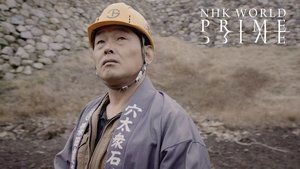
1. SAMURAI WALL
Castle design evolved in 17th century Japan with stone walls as a key feature. Sakamoto in Shiga Prefecture became famous for its mason's expert techniques for dry-stacking. They traveled across Japan to complete their commissions. But when feudalism ended 150 years ago, many castles were destroyed. While most of the masons lost their jobs, one family in Sakamoto survived by refurbishing old ruins. But the 15th-generation master Suminori Awata is worried about the future. One day he receives an unexpected request to build a castle-style wall in Texas. Awata's journey begins.

2. Repatriation: Resettling in North Korea
In Japan and South Korea, fact-finding research has begun to reveal the human costs and political backdrop of the North Korean repatriation program, which began in 1959. The program saw more than 90,000 Korean residents of Japan resettle in the North. Repatriates have previously described the difficult circumstances they faced there, but we now know that their lives were at the mercy of shifting policies and the flux of international affairs—the Cold War contention between the US and the Soviet Union, as well as the changing configuration of Japan's relationship to the 2 Koreas. This documentary features former repatriates who fled North Korea at the risk of their lives. The untold of 60 years of hardship is depicted through new testimony.

3. MIYAKO, The Last Dance
Miyako Yoshida's precise and delicate performances earned critical acclaim at the Royal Ballet of England. She remained true to her Japanese sensibilities in becoming the company's first Asian female principal dancer. A year before her retirement, however, she faced injury, emergency hospitalization and separation from a loved one. The program follows Yoshida for 300 days, culminating in her memorable final appearance.

4. 8K Documentary: The Microscopic World of iPS Cells
Doctors at Osaka University performed the world's first transplant of heart muscle cells derived from induced pluripotent stem cells (iPS cells). It is a promising treatment for many patients with heart disease. NHK worked closely with Kyoto University which generates iPS cells and Osaka University where the transplant surgery was conducted on a long-term project to record on an 8K Ultra HD camera mounted onto a microscope. For the first time in the world, the images will reveal the entire transformation process of iPS cells which can turn into any type of cell in the body.

5. All That Remains
An American famous photographer, Richard Misrach, and a Mexican contemporary composer, Guillermo Galindo, have worked together to create pieces with the artifacts that have been sporadically left during the migration on the 2,000-mile border between the U.S. and Mexico. The border is also known as the edge of life and death where hundreds of human remains are discovered every year. Be ready to experience a unique collaboration, "Border Cantos," which expresses the harsh reality unknown.
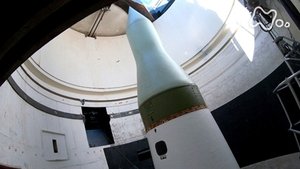
6. Stumbling Toward the Precipice
Since the end of the Cold War, the threat of apocalyptic, all-out nuclear war may have receded from most people's minds, but with close to 14,000 nuclear warheads still spread across the globe today, the catastrophic possibility is never too far away. During the 1973 Yom Kippur War, a diplomatic crisis between the US and the USSR veered terrifyingly close to triggering nuclear disaster. We explore the political miscalculations and very human mistakes made by the leaders of both superpowers.

7. Refugee Heroes: The Road to Tokyo
Following its historic debut in Rio de Janeiro in 2016, the Refugee Team is heading again to this summer's Tokyo Olympics and Paralympics. Record numbers of people have been forced to flee from their homelands in recent years—currently more than 70 million. Some of them are turning to sports and setting their sights on the world's biggest stage. We follow refugee athletes from Syria, South Sudan and Cameroon who are overcoming formidable challenges on their long road to Tokyo.
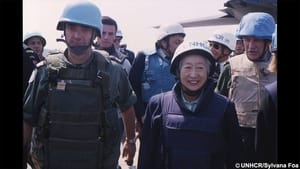
8. Dignity for All: The Legacy of Sadako Ogata
Sadako Ogata served as the UN High Commissioner for Refugees during a decade of ethnic conflict after the end of the Cold War, transforming the framework for humanitarian assistance and winning the respect of the world. "Advanced nations must not turn inward and fixate on their own national interests." As she made this plea for internationalism, how did she view the world? Looking back at her work and her words through NHK's archives, studio guests discuss the secrets of her adept leadership, her unbending convictions and behind-the-scenes episodes in her career.

9. Digital Detectives
"Digital Detectives" explores how Open Source Investigations have sparked a revolution in journalism. In their quest for the truth, experts around the globe use an extraordinary range of techniques to analyze social media, satellite images and seemingly innocuous websites. Major international media outlets and think tanks are in a race to secure the most talented people, who have shed light on some of the biggest stories of our times - including the downing of a civilian airplane in Iran, and the COVID-19 coronavirus pandemic. We meet some of the top investigators at the frontlines of this emerging digital battlefield, including the groundbreaking team known as Bellingcat.

10. 10 Years and Beyond: iPS Cells and Kyoto University's CiRA
Kyoto University's Center for iPS Cell Research and Application (CiRA) celebrates their 10th anniversary in April 2020. Professor Shinya Yamanaka, who developed the method to produce iPS cells, serves as the director for the center. How much progress have they made in the past 10 years toward clinical application? What vision does the director have for CiRA for the next decade? The program looks at how Yamanaka runs the organization as well as the past and future challenges of CiRA.

11. Journalism of Hope
Nowadays, there is a movement called "Constructive Journalism" occurring worldwide, in which citizens and the media gather information to solve local issues and everyday problems. In the United States, the distrust caused by highly sensationalized and speed-focused news, as well as the weakening of local media outlets, has led to a series of regional media companies going bankrupt. American media companies have crossed boundaries to collaborate and provide investigation reports to verify national and state policies. In Denmark, a public radio station has broadcast their citizens' worries as well as their solutions, and has grown to the point where it has influenced national policies. Similarly, in Japan, local newspapers have cooperated with each other to thoroughly address their readers' questions and worries, and have succeeded in solving national issues from a regional perspective. This is a documentary on the frontlines focusing on "Democracy in the Age of the Internet." (Excerpt)

12. OKINA Dance of Life
Noh-Kyogen is allegedly the most ancient existing form of theater. Among its repertories, "Okina-Sanbaso" is performed only on special occasions, such as the new year. With enigmatic origins, it is a sacred rite that only the selected few Noh actors are allowed to perform. In 2019, under cherry trees in full bloom, the most prominent Noh performers of Japan staged "Okina-Sanbaso" in Tanzan Shrine, Nara Prefecture. Kanze Kiyokazu, the direct descendant of Noh founders Kan'ami and Zeami and the 26th head of Kanze school, danced the first part, "Okina." Nomura Mansai, dancing the latter part, "Sanbaso," is an actor representing Japan. World-renowned musician, Ryuichi Sakamoto, who is also deeply interested in this unique piece, will animate throughout the program our exploration of the performance in an attempt to decipher the underlying spirituality of Japanese culture, in regard to concepts of "Multicultural symbiosis" and of "Animism." (Excerpt)

13. Oswald and JFK UNSOLVED CASES Part 1: The Pawn
The assassination of US President John F. Kennedy is still shrouded in mystery. With the help of top experts, NHK takes a new look at the incident through reenactments and fresh theories on the case. Lee Harvey Oswald, the man who killed JFK, was once a US Marine stationed in Atsugi, Japan who later defected to the Soviet Union. While his own upbringing played a role in his decisions, there is also a possibility that a certain organization was manipulating him behind the scenes. The testimony of Oswald's wife, Marina, also reveals a failed assassination attempt by Oswald in the months leading up to Kennedy's death. We follow the little-known footprints left by this infamous assassin.

14. Oswald and JFK UNSOLVED CASES Part 2: The Chessmaster
6 months before JFK was killed, Lee Harvey Oswald attempted a separate assassination. Our coverage reveals the possibility that this attempt served as a focal point that linked Oswald to the JFK killing. The day of that killing, Oswald brought a rifle into a Dallas building. The US government report says 3 shots from that building killed JFK, but we take a new look at witness testimony and speak to 66 prominent campaigners to ask: was the assassination really the work of a "lone wolf"?
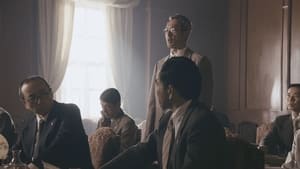
15. Peace and Justice: The Spirit of Japan's Postwar Constitution
The coronavirus crisis has pushed many to the brink of poverty. A lifeline has been provided by Article 25 of the Japanese Constitution—the "right to existence," a guarantee of a minimum livelihood, modeled after Germany's Weimar Constitution. Scholars have recently begun to reassess Suzuki Yoshio's key role, who studied the Weimar Constitution before World War II and encouraged Japan to adopt the right to existence early in the postwar era. In the 1930's, Suzuki became a lawyer and defended numerous intellectuals who were facing political repression. After the war, he was elected to the House of Representatives, where he worked to incorporate newly emerging ideas from around the world into Japan's postwar constitution—the right to existence of Article 25, the pacifist stance of Article 9 and other provisions. Interviews and dramatic recreations based on the archival record tell the untold story behind the birth of Japan's constitution. (Excerpt)

16. Pandemic Diaries: How the Emergency Declaration Affected Us
For months now, the Japanese have found themselves on an emotional rollercoaster every evening when the count of new coronavirus cases is confirmed. To document how the pandemic has affected our day-to-day lives, we asked people from all walks of life to make "selfie diary videos" that are broadcast on the evening news program Shibu Goji. Participants include a tour guide who had zero income in April, and a man with cancer wondering if he can outlive the coronavirus. These and other voices from real life help us to look back on the unprecedented past few months and perhaps orient ourselves to the new normal.

17. Tsuruko's Tea Journey in Germany
Hanzawa Tsuruko is a master of "chaji," a tea ceremony that starts with an exquisitely prepared meal and finishes with matcha tea served from the heart. The purpose of this four-hour event is to treasure every encounter in life, knowing that it will never recur. Tsuruko has been traveling around Japan to encounter new people and share "chaji" with them. Last autumn, at the age of 76, she set off on a tea journey across Germany. The program chronicles her month-long odyssey.

18. Exposing the Coronavirus: Our Invisible Enemy in 3DCG
We fear what we cannot see. Much of the terror caused by the novel coronavirus is because this mysterious enemy is invisible to the naked eye. CG designer and medical doctor Hirofumi Seo uses his background to decode the latest research, as well as interview experts in infectious diseases and viruses. The result is a visual model of our invisible foe. Take a visual tour of the mechanisms behind infection, replication, symptom progression and potential treatment in this scientific documentary.
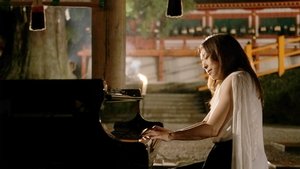
19. The Shape of Sound: A Piano Paints the Seasons of Nara
"The 72 Pentads of Yamato" produced by NHK Nara has garnered more than 2 million views online from around the world. Each pentad, or five-day season, reflects on the Japanese ideal of living in harmony with nature in Yamato, the ancient name for Nara. The series is created by Nara videographer Hozan Koichi and Kawakami Mine, a pianist who has performed in Spain. Follow Kawakami in her preparations for their next project—the pinnacle of the series—a devotional offering at Kasuga Taisha Shrine.
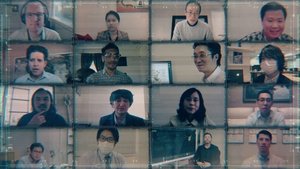
20. AI vs Pandemic: Part 1
Using the latest AI technology, can we defeat our "invisible enemy," the novel coronavirus that causes COVID-19? It was AI that first detected and warned about the infection outbreak, a homepage uses AI to collect and display the latest infection data, and 4 million AI experts are cooperating in a huge online project... In the first part, we report on how researchers on the frontline of the pandemic battlefield are fighting against the explosion of infections with the help of AI.
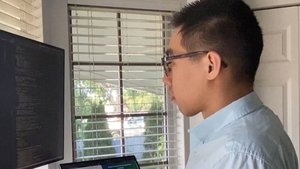
21. AI vs Pandemic: Part 2
Using the latest AI technology, can we defeat our "invisible enemy," the novel coronavirus that causes COVID-19? In Part 2, we hear from researchers on the pandemic battlefield frontline who are fighting against the explosion of infections with the help of AI. They include the solo data scientist whose predictions of COVID-19 deaths are the most accurate, the researcher who can detect viral infections from voices and researchers making full use of Fugaku, the world's fastest supercomputer.
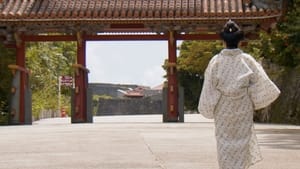
22. The Lost Textile of Ryukyu
The Ryukyu Kingdom (15C-19C) flourished in present-day Okinawa through international trade, and developed a unique culture known for its beautifully dyed and woven textiles. While craftspeople have made painstaking efforts to revive some of these traditions after their loss in the Battle of Okinawa (1945), one textile called "ton-byan" remains to be a mystery for many. Leading textile designer Sudo Reiko is among those who have been attracted to "ton-byan" for many years. As she travels Okinawa in search of traces of this craft, she uncovers the history and wishes for peace at the core of Ryukyu textiles.
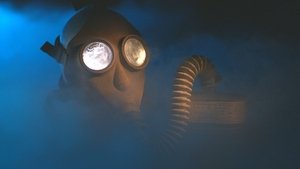
23. Poisonous Secrets: What Did Japan and the US Bury?
75 years ago, Japan and the US each developed chemical weapons and trained their troops to use them. Near the end of the Pacific War, the Imperial Japanese Army stockpiled vast amounts of poison gas for use as a last resort. The US military, meanwhile, drew up chemical weapons plans that would have devastated Japan. After the war, both the US and Japan concealed the truth concerning these weapons. But newly unearthed documents and personal accounts shed light on this dark legacy.

24. FACES the Special - Voices of Hope for an Inclusive Future
NHK is collaborating with 12 public broadcasters around the world to promote a project called "FACES" to tackle against bullying. FACES is a vast collection of two minutes testimony from people who have experienced being bullied. By using the network of partnership in FACES, this special edition aims to share specific efforts to tackle with bullying. Also dialogue between cross-country protagonists using online meeting, we deepen mutual understanding, be considerate, and follow in detail until we find a solution together.
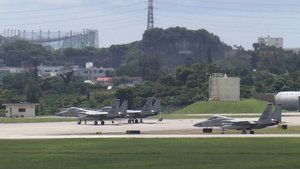
25. Koza, Okinawa: Base Town Blues
A historic music pub reopened in Koza, Okinawa Prefecture, near Kadena Air Base, in 2019. The owner, rock musician Miyanaga Eiichi, performed for American soldiers who were en route to the front lines during the Vietnam War. Now he tells audiences about how the music expressed soldiers' desires for peace, and recounts the history of the base town. Others whose paths crossed in Koza include a resident whose family home was seized for the air base, a former worker at bars catering to US soldiers, and a US veteran who joined the antiwar movement while in Okinawa. The complex history of a base town is explored.

26. UNTOLD STORIES OF THE BATTLE OF OKINAWA: Women and Teens on the Frontline
The final stages of World War II... The islands of Okinawa turned into a theater of war the United States military called "hell." The Battle of Okinawa claimed the lives of at least 120,000 islanders. Women and girls were forced in as army cooks or nurses, boys in their mid-teens molded into soldiers... and sent to the frontline. As most records were lost, families are still wondering how their loved ones were mobilized... and what became of them. But recently discovered documents reveal their unknown stories.
